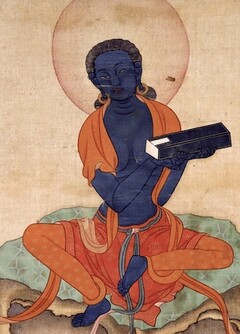Aspiration Prayers
English (123) | Deutsch (25) | Español (32) | Français (50) | Português (13) | Italiano (10) | Nederlands (4) | 中文 (14) | བོད་ཡིག (123)
A series of prayers of aspiration (Skt. praṇidhāna; Tib. smon lam) and works from related genres, including prayers for the spread of the teachings (bstan rgyas smon lam):
Commentaries
Devotion
General
revealed by Chokgyur Dechen Lingpa
by
Jigme Lingpa
by
Jigme Lingpa
by
Jigme Lingpa
revealed by Pema Lingpa
attributed to Sakya Paṇḍita Kunga Gyaltsen
Lamrim
Longevity
Madhyamaka
Mahāmudrā
Peace and Welfare
Prayers for the Spread of the Teachings
Recitation Guides
Tārā
by
Ratna Lingpa
